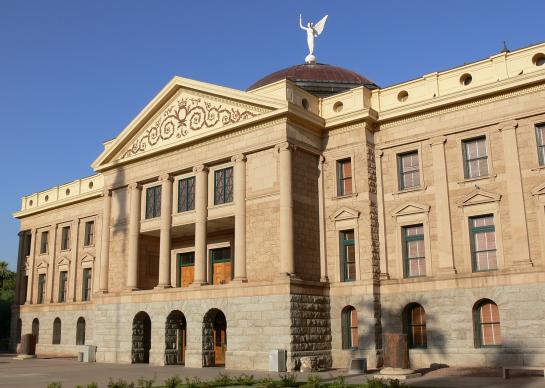AZ Primary Election News 08-05-2022

With few votes left to tally across the state, Arizona’s Primary Election results are almost complete. (Click here for the latest updates to election results.)
Republican voters chose right-wing candidates to pursue statewide offices in the November election, including many who had the endorsement of former President Donald Trump. Democrats selected candidates who have already held high-profile public offices, choosing those with statewide recognition in matchups that focused more on personality differences than policy disputes.
Political moderates did not succeed in most Primary Election races, and the General Election will ask Arizona voters to choose between two very different visions for the state. Right-wing Republicans celebrate what they see as a “purer” political approach to conservativism and an opportunity to defeat the political goals of opponents both within and without their political party. Democrats see the outcome as an opportunity to pursue support from those who are unwilling to vote for far-right candidates.
While the Primary Election leads to much uncertainty about how these political dynamics will play out in the November election, it did make some things clear:
- Lots of voters didn’t vote.
With most votes counted, the numbers show that just 31% of registered Arizona voters cast a ballot in the Primary Election. This isn’t unusual, especially for a mid-term election (a year that does not involve electing a U.S. President.) In the 2018 Primary Election, turnout was 33%; in the 2014 Primary Election, just 27% of registered voters participated.
- There will be a lot of new faces.
Next year, almost half of the seats in the legislature will be held by someone who was not in the legislature this year. That number could climb after the General Election, where most incumbents will run against candidates from the opposing political party.
Voters chose newcomers over current lawmakers in key districts across the state. According to the current vote count, 14 current legislators lost their race for another term in office:
-
- Representative Morgan Abraham (D-Tucson)
- Representative Rich Andrade (D-Glendale)
- House Speaker Rusty Bowers (R-Mesa)
- Representative Judy Burges (R-Skull Valley)
- Representative César Chávez (D-Phoenix)
- Representative John Fillmore (R-Apache Junction)
- Representative Joel John (R-Buckeye)
- Senator Vince Leach (R-Tucson)
- Representative Sarah Liguori (D-Phoenix)
- Representative Joanne Osborne (R-Goodyear)
- Senator Tyler Pace (R-Mesa)
- Representative Lorenzo Sierra (D-Avondale)
- Representative Christian Solorio Acuña (D-Phoenix)
- Senator Kelly Townsend (R-Apache Junction)
- Familiar faces will return.
Eight former legislators are on track to win their Primary Election races and pursue a return to public office:
-
- Ken Bennett (R-Prescott)
- David Farnsworth (R-Mesa)
- Laurin Hendrix (R-Gilbert)
- Lydia Hernandez (D-Phoenix)
- Anthony Kern (R-Glendale)
- Catherine Miranda (D-Laveen)
- Steve Montenegro (R-Goodyear)
- Maria Syms (R-Paradise Valley)
- There will be new leaders.
After every November election, incoming legislators elect leadership teams for each political party. This small group of legislators serves an important role: They represent the goals legislators have for the next two years and are granted the responsibility of pursuing those goals. Legislative teams negotiate the budget, oversee operations in the House and Senate, and serve as gatekeepers who determine which bills advance through the legislative process.
Republican and Democrat leaders in the House and Senate are all leaving office, and there’s tight competition between lawmakers who want to take on new leadership roles within their caucus. The winners of the General Election will determine which legislators best reflect the goals of the political caucuses, and who will get to set the priorities for the legislature in the next two years.
The Primary Election highlighted the sharp divides in Arizona politics and set the stage for a dramatic competition as candidates hit the campaign trail to earn support ahead of the November election.
What’s Next?
The competition has just begun for the candidates who succeeded in the Primary Election. Expect to see many more advertisements and candidate outreach in the 13 weeks until the November 8 General Election.
At the Capitol, study committees will continue to meet as lawmakers lay the groundwork for policy proposals in the 2023 session. For legislators who lost their Primary Election races, and those who are retiring from the legislature, the rest of the year will be an opportunity to wrap up their work and plan for their next steps outside the House and Senate.